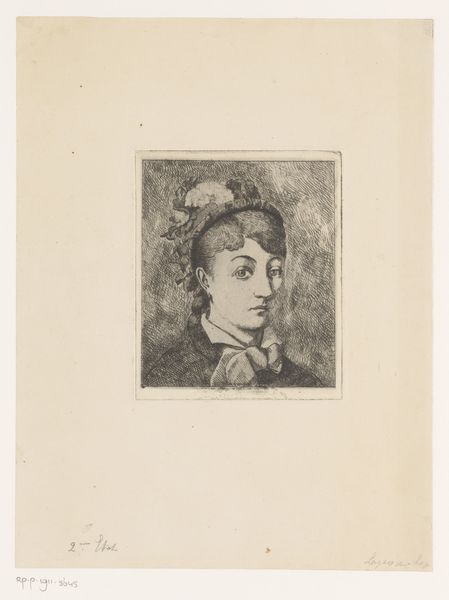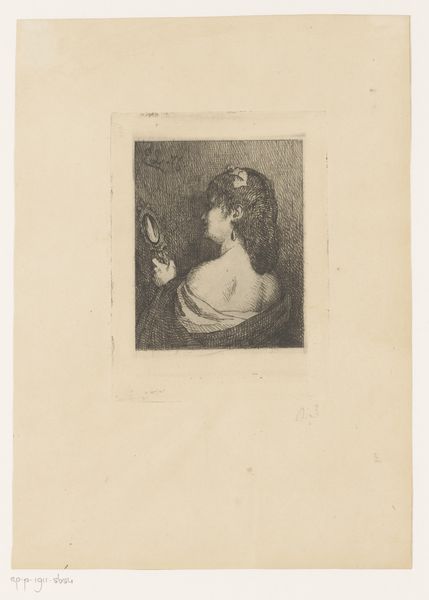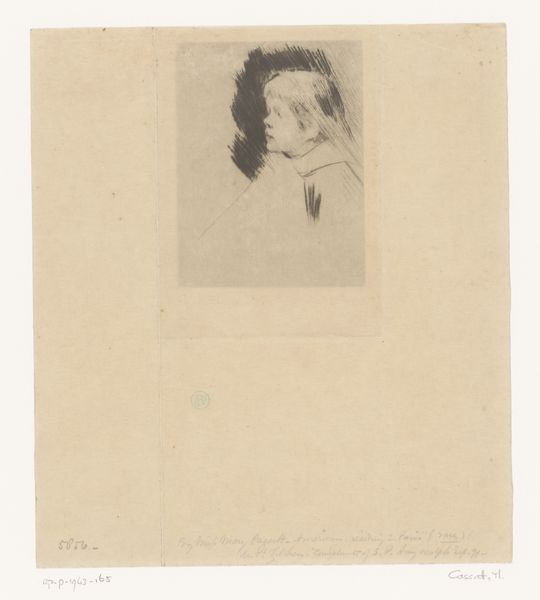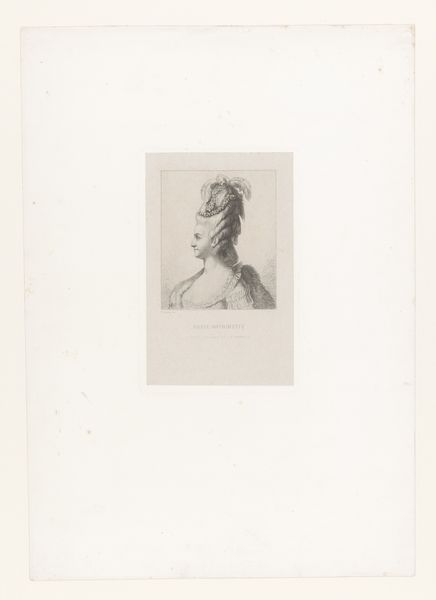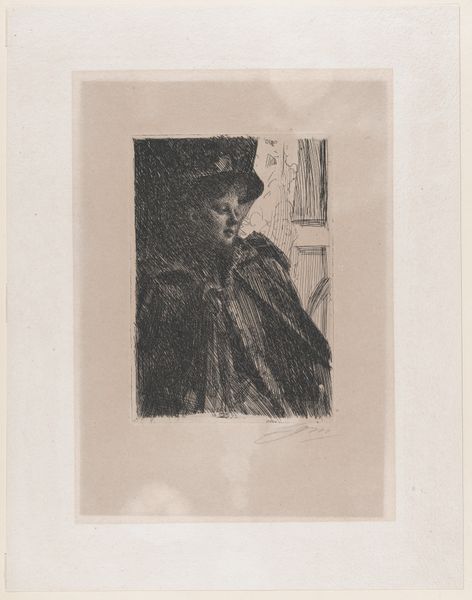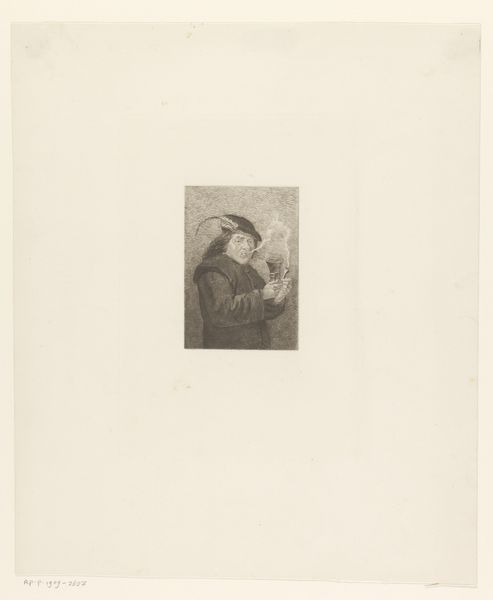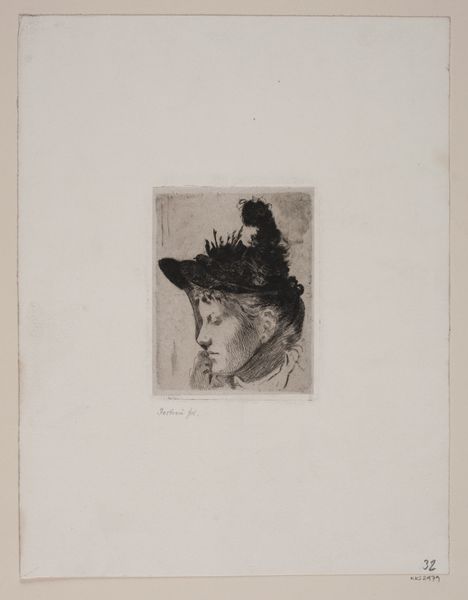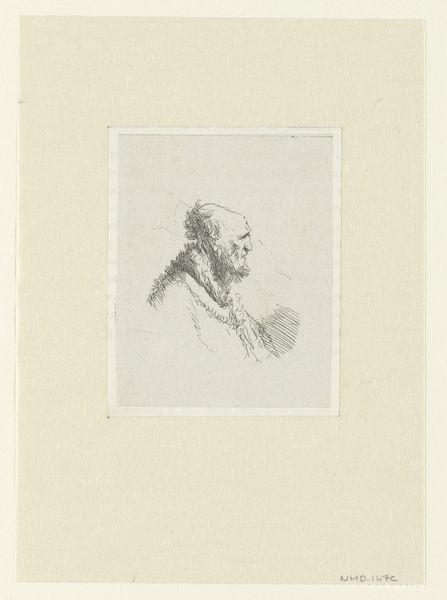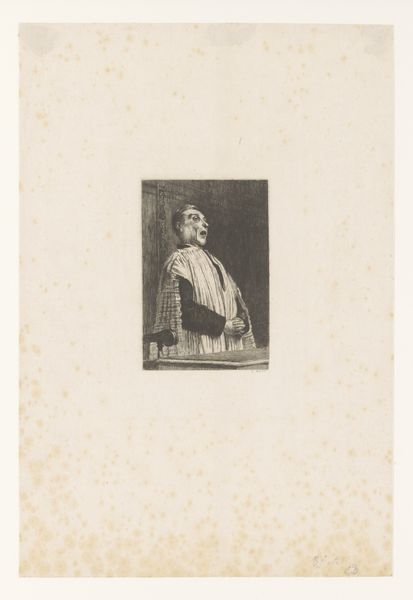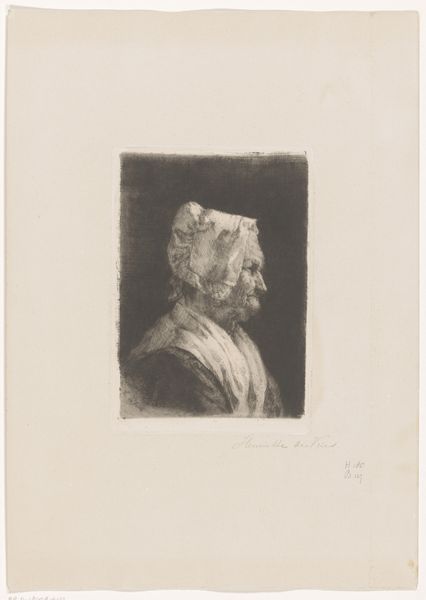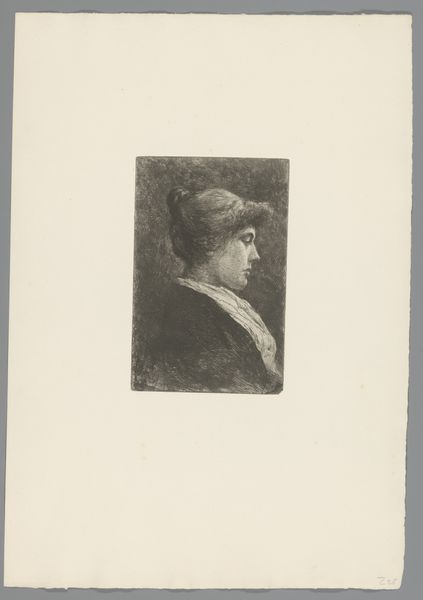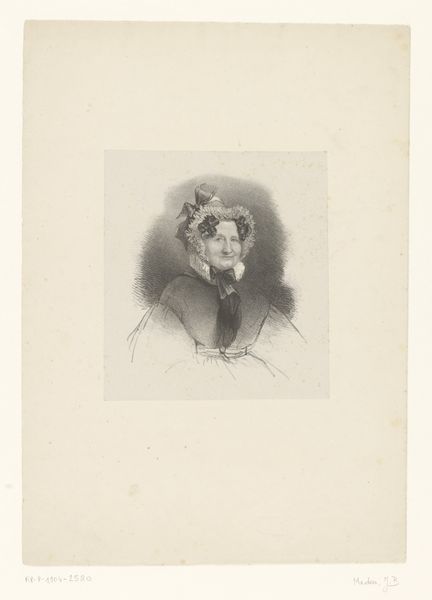
print, etching
#
portrait
# print
#
etching
#
realism
Dimensions: height 179 mm, width 155 mm
Copyright: Rijks Museum: Open Domain
This is Theodule Ribot's etching of a Ukrainian woman, now in the Rijksmuseum. Here, the artist employs a printing technique using a metal plate, likely copper or zinc. This labour-intensive process involves applying an acid-resistant coating, drawing the image, and then etching the exposed lines with acid, so that they can hold ink. The image’s striking tonal range arises from carefully controlling the depth and density of etched lines, influencing how much ink the plate retains. The texture of the paper also plays a part, absorbing the ink to create the image. The entire printing process required physical labor and a high degree of technical skill. Ribot’s choice of this medium is significant. Etchings were often used for reproducing artworks and disseminating images widely, making art accessible to a broader audience. This contrasts with the unique, precious nature of painting. By considering the materials, processes, and social context of this etching, we gain a deeper understanding of its meaning and significance. It challenges the traditional hierarchy between fine art and craft, highlighting the value of skill, labor, and accessibility in art production.
Comments
No comments
Be the first to comment and join the conversation on the ultimate creative platform.
